Executive summary
Canada’s federal science system is losing capacity and credibility, and needs urgent, sustainable investment to stay resilient.
PIPSC’s report, A science roadmap for Canada’s future: lessons from a decade of federal scientists’ voices draws on 12 years of surveys with thousands of federal scientists to get to the bottom line. Early gains in funding, transparency, and science integrity have stalled or reversed, threatening Canada’s ability to respond to future crises.
The data tells the story:
• Only 26% of scientists would recommend a federal science career
• Just 6.5% say their department has adequate research funding
• Confidence in evidence-based government policy has fallen from 57% to 44%
• 36% of federal laboratories are past their planned lifecycle
PIPSC’s report flags declining scientific integrity and systemic risks, and lays out a 10-point plan to re-establish independent oversight so scientists can share evidence freely, stabilize funding, fill vacant positions, modernize labs, restore fieldwork budgets, and more.
Each recommendation targets one of three core objectives: protect public interest science, rebuild capacity, and entrench accountability. Scientific capacity takes decades to build but can vanish in a single budget cycle. Without swift action, Canada risks entering the next crisis underprepared and underpowered.
Introduction
Canada’s federal scientists have been sending a message for over a decade: the system is broken, progress has stalled, and without decisive action, we risk losing the very capacity that helped us weather the last crisis.
This roadmap draws on 12 years of unprecedented survey data from the Professional Institute of the Public Service of Canada (PIPSC) — the voices of thousands of federal scientists, engineers, and researchers who form the backbone of Canada’s public science system. Their story is one of fleeting progress followed by dangerous regression, of rights written on paper but not lived in practice, and of mounting pressures that threaten to hollow out Canada’s scientific capacity just when we need it most. The path forward is clear, but the window for action is narrowing.

What scientists are saying: Optimism lost
Since 2013, PIPSC has conducted four comprehensive surveys of federal scientists, creating an exceptional window into the health of Canada’s public science system. These federal Science Surveys1 2 3 (2013, 2017, 2021, and 2024) capture the views of scientists, engineers, and researchers across federal departments and agencies.

Collectively, the series offers an unparalleled lens on how scientists experience their jobs, whether evidence reaches decision‑makers, and how political dynamics shape Canada’s science capacity. Each round has informed bargaining priorities, departmental scientific-integrity policies, and public advocacy campaigns led by PIPSC.
The latest results, gathered in 2024, tell a troubling story: after a brief window of optimism following the 2015 federal election, scientists have seen a lack of meaningful follow-through on the government’s rhetoric.
1 The Big Chill pipsc.ca/sites/default/files/comms/PDF_Reports/bigchill.en_.pdf, 2013
2 Vanishing Science pipsc.ca/sites/default/files/comms/PDF_Reports/VanishingScience_EN.pdf, 2014
3 Defrosting Public Science pipsc.ca/sites/default/files/comms/PDF_Reports/Defrosting-report-e_v4%202_1.pdf, 2018
The rise and fall of scientific optimism
The career recommendation data captures the emotional journey of Canada’s federal scientists over the past decade. In 2013, at the height of what scientists called the “Big Chill”, only 10% would “definitely” recommend a public science career to young people. The steep climb to 21% in 2017, then 38% in 2021, tells the story of hope restored as the post-2015 government rolled back restrictions and introduced scientific integrity policies.
But 2024 brought a jarring reversal — just 26% now say they would “definitely” recommend their career path. This drop reveals that optimism is fragile. When scientists won’t recommend their own careers to the next generation, it signals a profession in crisis. The question this data poses is stark — are we heading back to 2013 levels of despair, or can this trend be reversed before it’s too late?
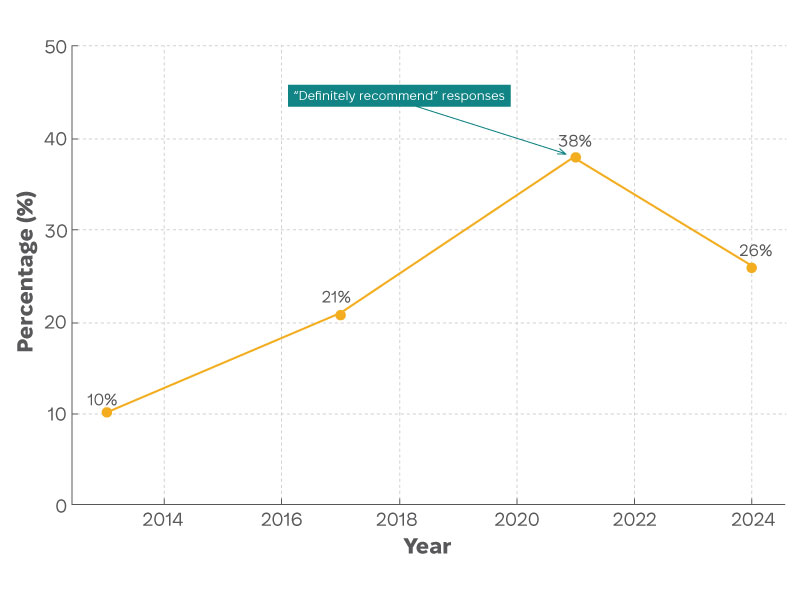
Figure 1. Would you recommend that young scientists consider a career in your Department or Agency?
Resources remain scarce
Despite numerous federal science spending announcements, the resource adequacy data exposes the gap between political promises and laboratory realities. The numbers are devastating – even at the 2021 peak, only 10.6% of scientists strongly agreed their departments or agencies had sufficient resources. The 2024 decline to 6.5% shows that funding increases aren’t reaching the bench level where science actually happens.
This isn’t just about money – it’s about the disconnect between budgetary theater and the daily struggle of researchers trying to do world-class work with inadequate resources. Every percentage point represents hundreds of scientists unable to pursue the research Canada needs. Only 6.5% of scientists in 2024 “strongly agreed” that their department allocates sufficient research resources – barely better than the 3% who said so in 2013. While there have been a few splashy announcements about government research funding, they have been narrowly targeted.
This persistent disconnect between funding announcements and reality reflects a deeper problem – money allocated to science doesn’t always reach the scientists.
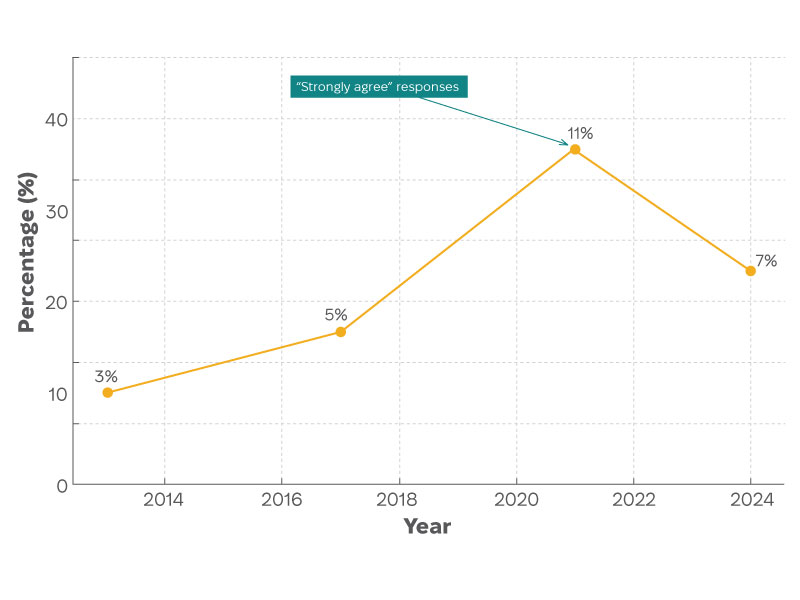
Figure 2. Does your Department or Agency allocate sufficient resources for research and development (2013–2024)
Momentum lost
The science capacity data documents one of the most alarming reversals in the survey. In 2021, 51% of scientists said capacity in their department had increased – a surge that suggested departments were finally rebuilding after the devastating cuts of the early 2010s. The crash to just 34% in 2024 reveals that recovery has not just stalled, but reversed. Notably, this survey was conducted before the Comprehensive Expenditure Review was announced and we know that research is a potential target for reductions in discretionary spending.
This isn’t just about headcount; it’s about institutional memory, mentorship chains, and the critical mass needed to tackle complex challenges. With retirements accelerating and departments planning on cutting 15% of their budgets over the next 3 years, this data foreshadows a capacity crisis that could take decades to reverse.
With retirements accelerating and hiring lagging, departments and agencies are struggling to maintain even basic staffing levels, let alone build for the future. Science capacity isn’t rebuilt overnight – it requires sustained investment in people, infrastructure, and institutional knowledge. It is unclear how the government hopes to attract the talent needed to regulate, let alone innovate, in crucial areas like artificial intelligence, machine learning, cybersecurity, and quantum technologies, with aging infrastructure and declining funding.
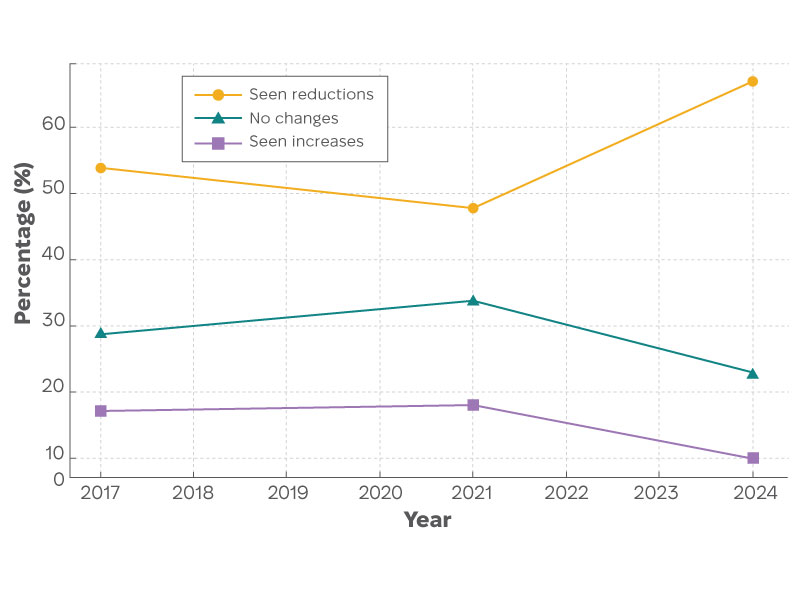
Figure 3. Trends in workplace science capacity
Listening to evidence
Scientists’ confidence in evidence-based policy peaked in 2021, when over 57% were satisfied that policies were based on scientific evidence. The 13-point drop to 44% by 2024 represents more than statistical variance – it’s a trust recession that shows scientists watching their expertise get sidelined again.
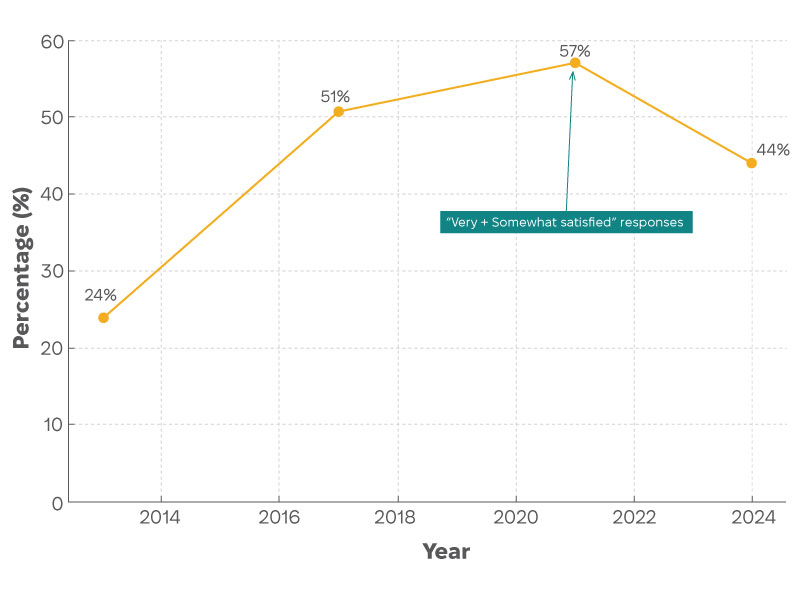
Figure 4. Satisfaction with the use of scientific evidence in policy development
When most scientists believed their evidence influenced policy in 2021, it suggested that the post-2015 consultation culture was working. The regression to 44% shows that transparency and consultation gains of recent years are being clawed back. This matters beyond government walls – when scientists lose faith that evidence drives decisions, the public loses its early warning system for emerging threats.
Additional evidence-based policy metrics reinforce this troubling pattern across multiple dimensions of scientific input.
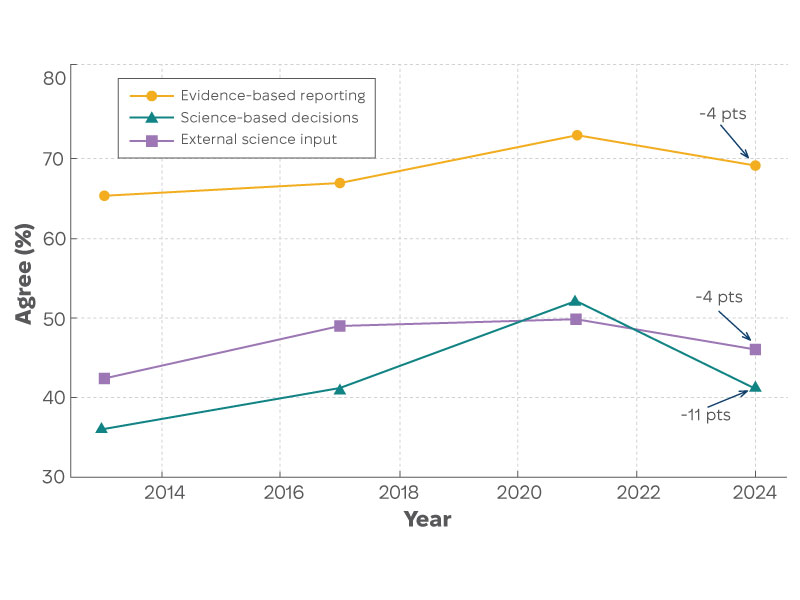
Figure 5. Use of evidenced based policy in departments and agencies 2013-2024

Running interference
The most detailed tracking comes from questions about interference – requests to alter or omit findings for non-scientific reasons. The data reveals both real progress from the “Big Chill” era (2013) and the troubling reality that improvement has largely stalled.
Between 2013 and 2017, interference dropped dramatically across all categories:
• Political staff requests: 314 → 144 scientists affected (15% → 5%)
• Business/industry pressure: 398 → 272 scientists affected (16% → 9%)
• Other departments and agencies: 320 → 177 scientists affected (12% → 6%)
• Manager/supervisor pressure: 677 → 397 scientists affected (22% → 13%)
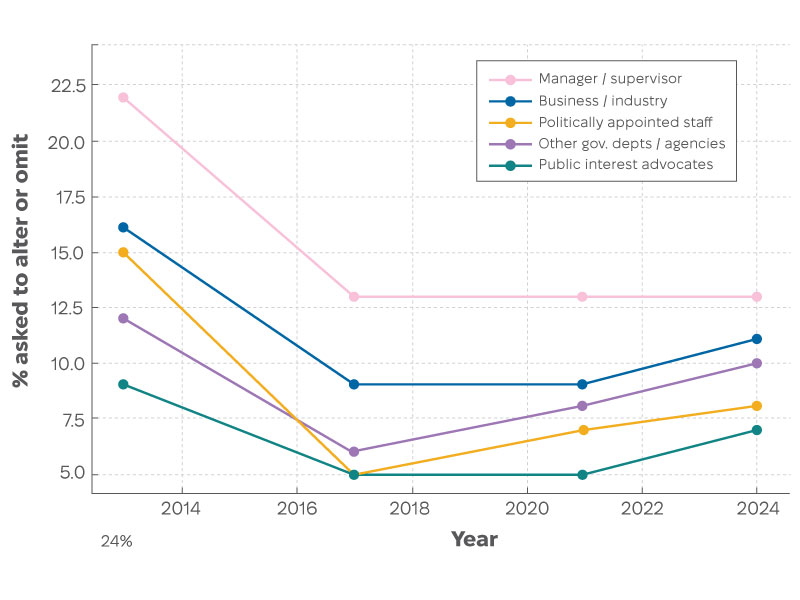
Figure 6. Requests to alter or exclude science for non-scientific reasons 2013-2024
However, since 2017, the decline has plateaued or even reversed in some areas. Political interference edged back up to 152 scientists (8%) in 2024, while business pressure rose to 210 scientists (11%). The persistence of manager/supervisor pressure remains most concerning, affecting 261 scientists (13%) in 2024 – still double the count of any external group.
Sources of pressure
Breaking down interference by source reveals distinct patterns. Political staff interference shows the post-2015 reforms worked, but the uptick to 8% in 2024 suggests political pressure is creeping back. Business and industry pressure maintains a steady influence at 9–11% regardless of political changes. Public interest advocates remain consistently the lowest source at 5–7%, contradicting narratives that environmental groups “pressure” scientists. Most telling, managers and supervisors consistently rank highest, around 13%, revealing that the biggest threat to scientific integrity comes from within the hierarchy, not external politics.
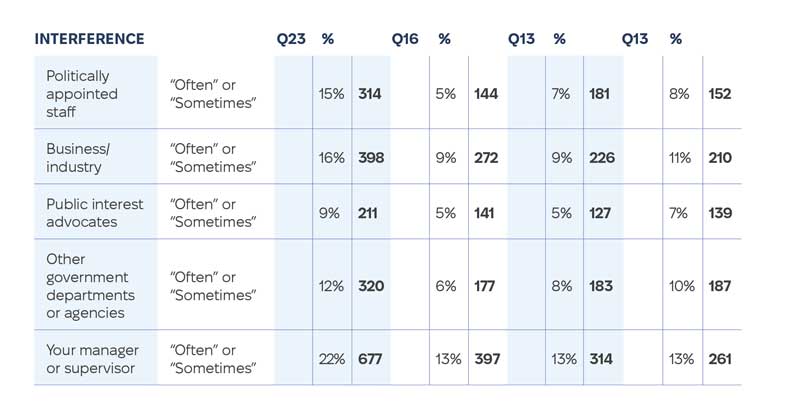
Table 1. Sources of Pressure for Interference
This pattern reveals a crucial insight: while the most egregious political interference of the Harper-era has been curtailed, day-to-day hierarchy remains the critical chokepoint for scientific independence. It also explains a lack of meaningful progress on implementing scientific integrity policies – managers who are interfering with the work of their subordinates are hardly likely to be actively promoting and enforcing the principles of non-interference. Each number in this dataset represents a scientist who had to choose between career advancement and professional integrity.
The pattern is clear
Across 12 years of data, a consistent narrative emerges: substantial progress from 2013–2021, followed by stagnation or regression from 2021–2024. Scientists experienced real gains in the immediate aftermath of 2015 but, by 2024, many of those early gains appear to have plateaued or reversed. Scientists are less likely to feel that their evidence is valued, resources remain strained, and workplace morale has dipped.
Persistent issues like political interference, inadequate staffing, and barriers to open communication remain unaddressed in many departments. The gap between policy rhetoric and daily experience is growing. As PIPSC emphasizes, it is not enough to “unmuzzle” science with communications reforms alone. Sustained change requires cultural shifts in management, robust accountability mechanisms, and long-term investment in people, tools, and transparent governance.

Science capacity: Boom, bust and hollow labs
Canada’s federal science system has become trapped in a cycle of boom-and-bust that leaves laboratories scrambling and talent fleeing. Despite recent investment headlines, the 2024 scientist survey reveals a stark reality – 51.8% of scientists reported funding reductions in their own programs – more than double the 24.6% who said so in 2021.
The funding rollercoaster
While nominal dollars show growth, inflation and expanding mandates have diluted buying power. PIPSC’s 2024 pre-budget submission calls for a targeted $1.4 billion infusion directly to intramural research and development so departments and agencies can rebuild in-house capacity instead of defaulting to costly outsourcing.
Federal intramural science and technology spending tells the story of Canada’s dysfunctional relationship with science funding. From its 2010/11 high of $6.3 billion, adjusted for inflation, federal science and technology (S&T) spending contracted for four consecutive years, reaching a low of $4.8 billion in 2014–15 under Program Review austerity.4
This period stripped operating funds from intramural labs and delayed or cancelled multi-year projects. World-class research facilities were shuttered. St. Andrews Biological Station, The Experimental Lakes Area and the Polar Environment Atmospheric Research Laboratory were all casualties. Environmental protections were removed from 99% of Canada’s lakes and rivers, and the 400 scientists responsible for this work were let go.
Beginning in 2015–16, modest restorations aligned with PIPSC’s calls for reinvestment, lifting expenditures back to $5.4 billion by 2017–18.
4 Source: StatscanTable: 27-10-0026-01 Federal expenditures on science and technology, by major departments and agencies. 2017 Constant dollars based on GDP price deflator with author’s calculations.
The effect is even worse when you examine spending on research and development. Over this same period, spending has gone down by a staggering $1 billion.
• 2013–2021: Improvements included increased funding, greater scientific freedom, and a perceived shift towards evidence-based policies.
• 2021–2024: Momentum stalled, satisfaction declined, and cuts to scientific capacity reemerged, while modest increases appeared in interference and communication restrictions.
The planned reductions signal a return to the familiar boom-and-bust pattern that makes long-term science planning impossible. You can’t build scientific expertise with short-term thinking. Research careers span decades, not budget cycles. While spending remains elevated above historical levels, the pullback risks triggering another cycle of uncertainty just as departments and agencies were beginning to rebuild.
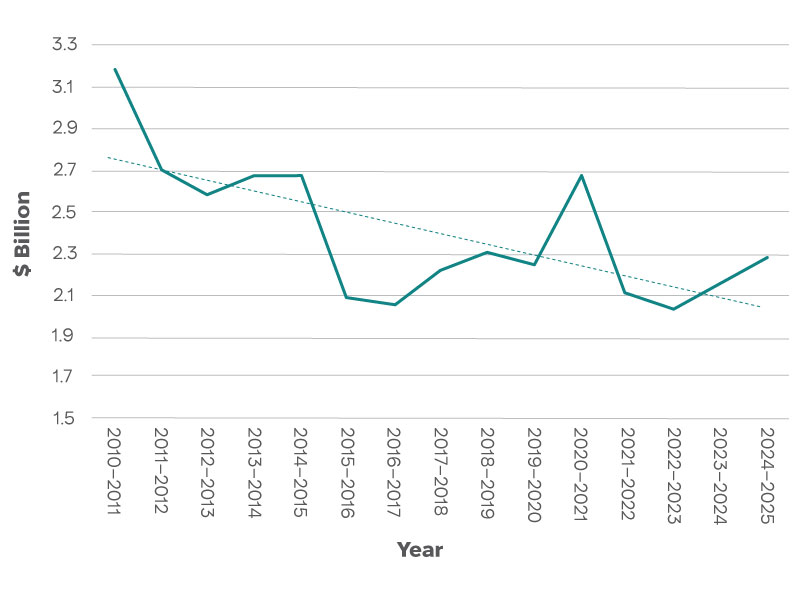
Figure 7. Federal spending on intramural research and development 2010–11 to 2024–25
The human cost of political volatility
Federal science employment shows the devastating impact of boom-and-bust funding cycles. Personnel fell from 39,000 full-time equivalents (FTEs) in 2010–11 to just 35,000 in 2014–15 – a loss of 4,000 positions, or more than 10% of the workforce. Behind every number is a career disrupted, expertise lost, or young scientists who looked elsewhere for stability.
Progress was gradual, but eventually the total headcount returned to previous levels, fuelled mainly by growth in related scientific activities. Unfortunately, that doesn’t tell the whole story. Today, there are 3,000 fewer people doing research and development in natural sciences and engineering then there were in 2010/11.5 With the cuts announced in 2024 and the Comprehensive Expenditure Review expected in 2025, public science will be set back even further. The cuts don’t just affect employment statistics – they sever mentorship chains and disperse institutional knowledge that took decades to accumulate.
Researchers who continue to innovate, publish, and participate in their peer communities are also crucial in providing trusted advice to policymakers on the latest technological developments based on a deep understanding of when claims are credible and when they are not. Canada suffers when external industry experts can tell politicians their version of what their products or services can accomplish and how safe they are without fear of being contradicted.

5 Statscan Table: 27-10-0009-01 Federal personnel engaged in intramural research and development.
The human dimension extends beyond numbers. PIPSC’s research shows that women, early-career scientists, and field researchers are disproportionately affected. PIPSC’s 2025 Gender Equity in Fieldwork guide6 documents persistent gaps in safety equipment, mentorship, and career progression that risk losing critical talent precisely when diversity of perspective matters most. While the government responded to the Naylor report – Canada’s fundamental science review – by increasing funding for early-career academic researchers for precisely these reasons, they have yet to do the same for their own employees. For example, they will not allow a government researcher on parental leave to roll over their funding to the following year, while they do exactly that for graduate students and fellows.
Infrastructure at a breaking point
A Laboratories Canada contractor has identified that 36% of the federal government’s 1,450 laboratory and science facilities are in poor or critical condition.7 Deferred maintenance has compounded chronic underinvestment in specialized equipment, creating an infrastructure deficit that no amount of short-term spending can quickly remedy.
Meanwhile, travel restrictions continue to tighten in 2023, rated “very negative” by 47% of scientists, and remain in force despite scientific integrity policies guaranteeing freedom to collaborate. The share of scientists who consider conference funding adequate has plummeted from 53% to 29%, cutting off vital knowledge exchange networks. While scientists understand well the need to reduce unnecessary travel for the benefit of the planet, the irony is that we are cutting back on the fieldwork needed to understand climate change due to restrictions on travel. At the same time that the government is insisting on inflexible return to office mandates on the premise of the benefits of in-person collaboration, they are also insisting that scientists and researchers can form meaningful collaborations with external colleagues purely virtually. This further harms early-career researchers who are more likely to be in marginalized groups, as older scientists can rely on relationships formed in years past, while new scientists are stuck trying to meet people from their desk in a tiny cubicle in a building that may be falling apart.
6 The Gender Equity in Fieldwork guide pipsc.ca/news-issues/defending-public-science/gender-equity-in-fieldwork-guide-employees-and-managers, 2025
7 Building the Future of Federal Science tiree.ca/building-laboratories-canada 2025
The data and digital divide
The 2023 federal budget push to modernize legacy IT systems has created intense demand for AI and data science skills. However, departments lack the in-house expertise to avoid costly outsourcing or to adequately review and assess the solutions proposed by industry. PIPSC warns that the Phoenix payroll disaster should serve as a cautionary tale about relying on private contractors for mission-critical systems.
Fragile recovery
The data shows federal science capacity slowly recovering from the devastation of the early 2010s, but that recovery remains precarious. Current investments have yet to rebuild the human expertise lost during the cuts, and looming attrition plans threaten to trigger another exodus before capacity is fully restored.
Canada’s ability to respond to the next crisis – whether pandemic, cyberattack, or climate emergency – depends on decisions made today about investing in people, infrastructure, and stable funding. The boom-and-bust cycle must end if Canada hopes to build the scientific resilience the future demands.

Rights on paper, risks in practice: The gaps in scientific integrity
Scientific integrity has travelled remarkably fast from concept to policy in Canada. After the “Big Chill” era of the Harper years, PIPSC negotiated groundbreaking “unmuzzling” agreements in 2015, leading to scientific integrity clauses embedded in fifteen collective agreements by 2017. PIPSC worked with the Office of the Chief Science Advisor (OCSA) and the Treasury Board Secretariat of Canada (TBS) to transform these into a Model Policy in 2018; by 2022, most of the 25 departments and agencies required to implement them had local versions in place.
On paper, the transformation looks complete. However, several structural problems undermine even well-intentioned implementation efforts:
• The TBS’ 2024 threatened withdrawal from the tri-party scientific integrity committee, eliminating a crucial forum for the escalation of complex cases and for monitoring the still fragile implementation of the policies
• Compliance data collected annually are seldom shared with unions or made public, contrary to transparency principles and the explicit language of our collective agreements
• Ethical violations or misconduct related to a subject that covers more than one departmental mandate — Cross-department breaches stall when no single authority can lead investigations. Environmental assessments are prime examples where this added protection is needed.
• Communications policies in some departments still conflict with scientific integrity free-speech clauses
As a result, federal scientific integrity policies face four key gaps:
1. The awareness gap: Many employees, and even managers, remain unaware of their scientific integrity rights or misunderstand how to use them. The “right to speak” often goes unexercised not from fear, but from ignorance. Valid concerns about international competition and espionage in a few specific areas are being used as justification to reintroduce controls on all publications. Departments and agencies have been better at adopting policies than at implementing them.
2. The enforcement gap: Only a handful of departments and agencies publish formal complaint procedures or track key performance indicators for scientific integrity. Most cases get routed through informal HR channels that offer little transparency or deterrence. Decisions on cases agreeing about the need for transparency come back marked as sensitive and not for release. When scientists do raise concerns, they often disappear into administrative black holes.
3. The resource gap: Fewer than one-third of departments and agencies properly fund dedicated Scientific Integrity Officer positions. Most officers juggle scientific integrity responsibilities alongside other duties, creating backlogs in investigations and limiting proactive outreach. Members have had to explain to investigators basic concepts, like single-blind peer review. The result is a system that looks good on organizational charts but lacks the capacity to function.
4. The integrity gap: PIPSC surveys still find about 13% of scientists being asked to alter or omit findings, showing that policy changes alone haven’t shifted day-to-day practices.

Closing the gaps
To close these gaps, PIPSC urges the incoming government to:
• Establish an independent tri-party review panel (TBS–OCSA– PIPSC) with authority to investigate scientific integrity complaints and mandate corrective actions.
• Mandate annual Scientific Integrity training and public reporting of key performance indicators (e.g. complaints received, resolved, and processing times) for every department agency.
• Enable cross-department investigations when breaches involve multiple departments and agencies.
• Protect the right to express. Delete or narrow proposed research security pre-clearances and ensure conflict of interest language cannot be used to pre-emptively muzzle all scientists.
• Make Scientific Integrity training and transparent key performance indicators mandatory across departments and agencies.
• Allocate dedicated FTE funding for Scientific Integrity Leads and offices in proportion to department size, to ensure sufficient capacity for investigations, monitoring and outreach.
• Update Treasury Board communications directives to harmonize with Scientific Integrity free expression clauses.
These actions will turn written rights into lived reality, ensuring Canada’s federal science remains open, trusted, and resilient.
The incoming government faces a choice: let scientific integrity remain a symbolic victory, or build the mechanisms needed to make it a lived reality for Canada’s federal scientists.

Fix it, fund it, free it: A 10-step federal science action plan
Drawing on 12 years of survey evidence and the gaps identified throughout this roadmap, PIPSC recommends ten practical actions that a new federal administration can implement within its first budget and mandate letters. Each recommendation targets one of three core objectives: protect public interest science, rebuild capacity, and entrench accountability.
1. Re-establish the Tri-Party Scientific Integrity Governance Committee (PIPSC-TBS-OCSA) with a fixed annual meeting schedule, dedicated budget, and requirement for public minutes. TBS’ threatened withdrawal has left the system without crucial oversight.
2. Mandate transparent departmental reporting on scientific integrity compliance. Require annual publication of key metrics (e.g. complaints received, resolved, processing times, and training completion rates).
3. Create cross-departmental breach investigation mechanisms led by joint panels of Scientific Integrity Officers. Too many cases currently fall through jurisdictional cracks when multiple departments and agencies are involved.

4. Protect the “right to express” by rejecting any Model Scientific Integrity Policy 2.0 clauses requiring pre-approval of publications or media comments. Scientific integrity means the right to speak and to publish, not the right to seek permission to do so.
5. Stabilize intramural research funding and reverse attrition-driven staffing cuts. Commit to filling at least 3,000 research positions by 2027, focusing on early-career scientists and underrepresented groups.
6. Restore conference and fieldwork travel budgets to 2019 levels and streamline approval processes. Science is collaborative and not all data starts at a desk or in a lab — artificial barriers to collaboration weaken the entire system.
7. Fund dedicated Scientific Integrity Officers (minimum 0.5 FTE per 500 scientists) with professional development budgets. Scientific integrity cannot be a part-time responsibility managed by overworked administrators.
8. Embed equity checkpoints in all new science programs, leveraging PIPSC’s Women in Science toolkit8 and 2025 Fieldwork Guide9. Diversity of perspective strengthens scientific judgment while barriers to participation weaken it. Hiring early career researchers to meet employment equity targets, but depriving them of the funding they need to do meaningful work, is yet another systemic barrier.
9. Launch a Science Capacity Rebuild Fund dedicated to modernizing laboratories and digital infrastructure. Include transparent tracking of capital expenditures and maintenance backlogs to ensure investments reach the lab bench.
10.Commit to public review of Model Scientific Integrity Policy 2.0 within 18 months, co-chaired by PIPSC. The review must integrate Indigenous knowledge frameworks and additional safeguards to ensure policy updates do not dilute the right to express and the ability to form external collaborations. New clauses must not distract from the unfinished business of implementing the requirements already there.
8 PIPSC’s Women in Science toolkit pipsc.ca/news-issues/defending-public-science/women-in-science-toolkit, 2021
9 Gender Equity in Fieldwork Guide pipsc.ca/news-issues/defending-public-science/gender-equity-in-fieldwork-guide-employees-and-managers, 2025
Implementation timeline
These recommendations can be implemented through three complementary tracks:
• Budget 2025: Funding commitments for capacity rebuild, travel restoration, and Scientific Integrity Officer positions
• Mandate letters: Direction to Ministers on scientific integrity governance and reporting requirements
• Regulatory review: Updates to TBS communications directives and departmental policies with scientific intergrity free expression
The stakes
Federal scientists have weathered more than a decade of cuts, restrictions, and uncertainty. They helped Canada navigate the COVID-19 pandemic, the climate emergency, and countless smaller crises that never made headlines. Their expertise will be essential for whatever challenges lie ahead.
But expertise is fragile. It takes years to build and can disappear in budget cycles. The scientists surveyed by PIPSC are sending a clear message: the system that emerged from the “Big Chill” is under stress again, and was never consistent across all departments and agencies. Without decisive action, hard-won progress risks being reversed.
The choice facing Canada’s incoming government is stark. We must invest in the public science system that serves as an early warning system for emerging threats, or risk being caught unprepared when the next crisis hits.
The roadmap is clear. The window for action is narrowing. The time to choose is now.
The scientists have spoken: The journey begins now
For over a decade, PIPSC’s surveys have provided an unvarnished view into the health of Canada’s federal science system. The message from 2024 is unmistakable — progress has stalled, optimism is waning, and the foundations of public science remain fragile.
But the same surveys that document current problems also point toward solutions. Scientists don’t want to complain; they want
to contribute. They have specific recommendations, backed by years of experience, about what works and what doesn’t.
The government has a choice to make. It can treat science as a luxury to be funded when times are good and cut when budgets tighten. Or it can recognize that science is an infrastructure as essential to modern governance as roads, bridges, or
broadband networks.
The COVID-19 pandemic offered a preview of what’s possible when governments trust science and scientists feel empowered to speak truth to power. But it also revealed the cost of letting scientific capacity erode. Scrambling to rebuild expertise in the middle of a crisis is expensive, inefficient, and sometimes impossible.
Canada’s federal scientists stand ready to serve. The question is whether Canada’s government is ready to support them.
The roadmap is complete. The journey begins now.



